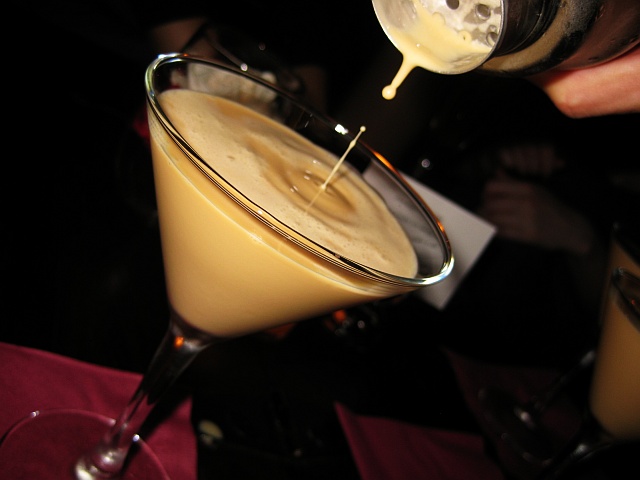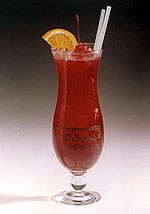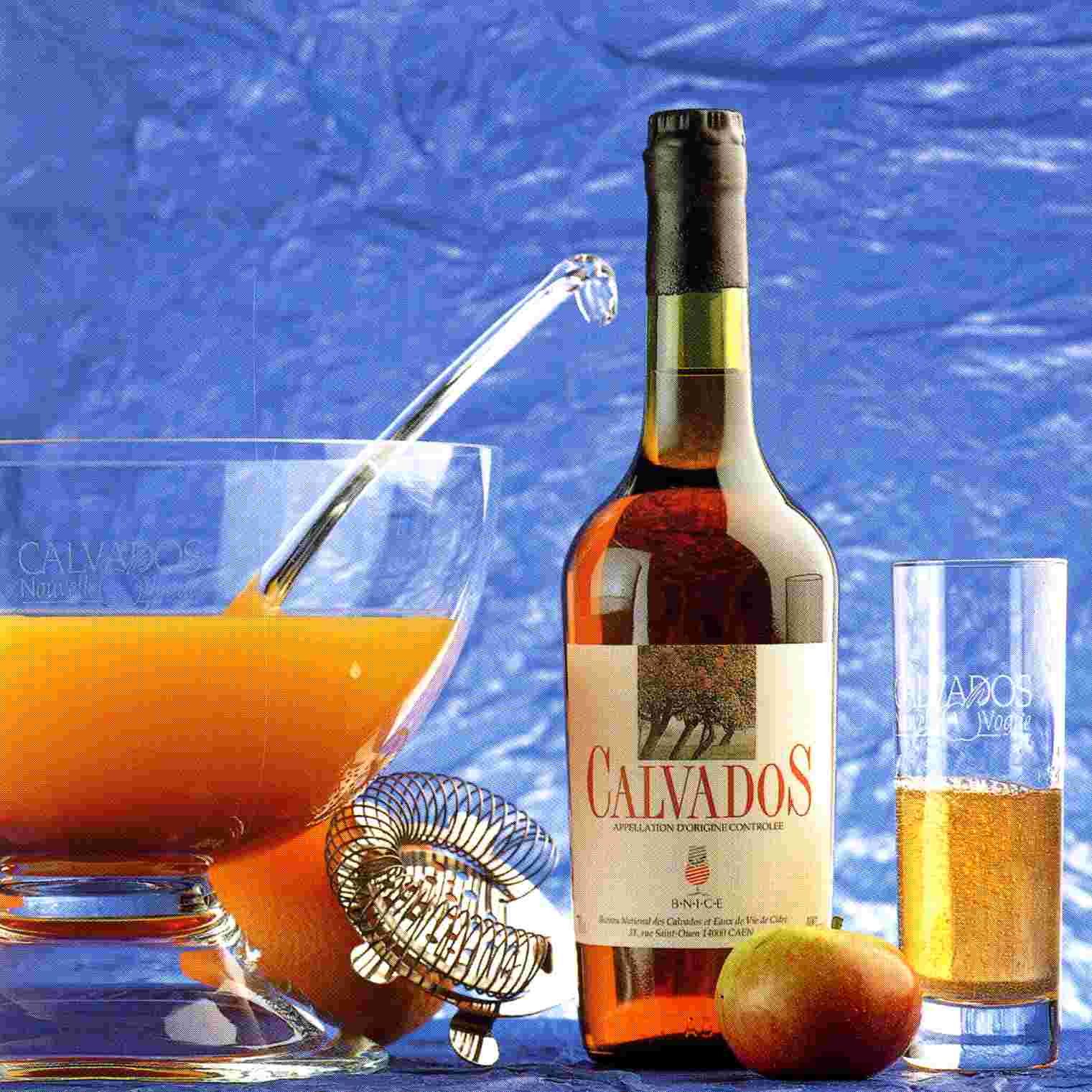I have not yet given my friend Matt Haggerty enough credit on this blog. Bar Kiley the blog came about because Matt suggested that I blog about my hobby and he has continued
to be one of the blog’s biggest supporter (and, to date, still the only person to post a comment on the blog). Last month, he sent me a link to a
few holiday drinks (found here), and I thought we might try out one of them for
December – the Peppermint Alexander. It seemed perfect after we had featured
the Brandy Alexander last month, so I went out last week and picked up a bottle
of Godiva White Chocolate liqueur for Zack and I to play around with at the bar.
 We dutifully made up the Peppermint Alexander as per the
recipe linked above (equal parts white chocolate liqueur, vanilla vodka and
peppermint schnapps with a splash of cream), but we were a little disappointed
with the result. The peppermint flavor was way too strong and it drowned out
the white chocolate flavor almost completely (which is a problem given the
price tag on the Godiva liqueur). It was not an unpleasant drink, but the other
flavors did not add much to the overriding strong notes of peppermint.
We dutifully made up the Peppermint Alexander as per the
recipe linked above (equal parts white chocolate liqueur, vanilla vodka and
peppermint schnapps with a splash of cream), but we were a little disappointed
with the result. The peppermint flavor was way too strong and it drowned out
the white chocolate flavor almost completely (which is a problem given the
price tag on the Godiva liqueur). It was not an unpleasant drink, but the other
flavors did not add much to the overriding strong notes of peppermint.
We tried a few different ways to modify the drink, but we
weren't really happy with any of our results. I included the best version of
the drink below, but ultimately we decided to move on and see if we couldn't find a new way to feature the Godiva White Chocolate liqueur with our own recipe. We decided we wanted to keep the
vanilla hints featured in the Peppermint Alexander, but we chose to feature brandy as the
main flavor in the drink. The smoothness of the brandy gives a nice boozy
flavor to the Godiva liqueur, but it is not overwhelming – the white
chocolate still came through quite nicely. We named our creation the “Opera
Glove” because it was long, white and classy. We hope you enjoy it!
The Opera Glove Cocktail
In a cocktail shaker, combine
1.5 oz Godiva White Chocolate liqueur
1 oz VS or better brandy
0.5 oz vanilla schnapps
Splash of cream or half & half
Shake over ice until the drink is frothy, strain and serve
is a martini glass. If you are a chocolate fan, this drink could benefit from a spiral drizzle of chocolate syrup in the center as a garnish. However, if you’re me (and you are a
weirdo and don’t like dark or milk chocolate), garnish the rim with a strawberry.
A few notes, as always:
*The same notes concerning cream from the Brandy Alexander
apply here. I would recommend half and half for the Opera Glove – but feel free
to use a “large-ish” splash – I think this drink tastes better when it is a
little thicker.
*The same notes about brandy found in the Side by Sidecar
post also apply here. If you are willing to invest in the Godiva liqueur (you
don’t need to – there are cheaper white chocolate cream liqueurs), then you
should make sure the rest of your ingredient are up to the same level of
quality. VS is great, VSOP is even better.
We hope you enjoy our creation. As an added bonus, here
is the modified recipe for the best version of the Peppermint Alexander:
In a cocktail shaker, combine:
1 oz Godiva White Chocolate Liqueur
0.5 oz vodka
0.5 oz vanilla schnapps
1/3 oz peppermint schnapps
2/3 oz cream
Shake over ice until the drink is frothy. Strain and serve
in a martini glass. Garnish with a small candy cane as a stirring stick.
Enjoy your Opera Glove!

























